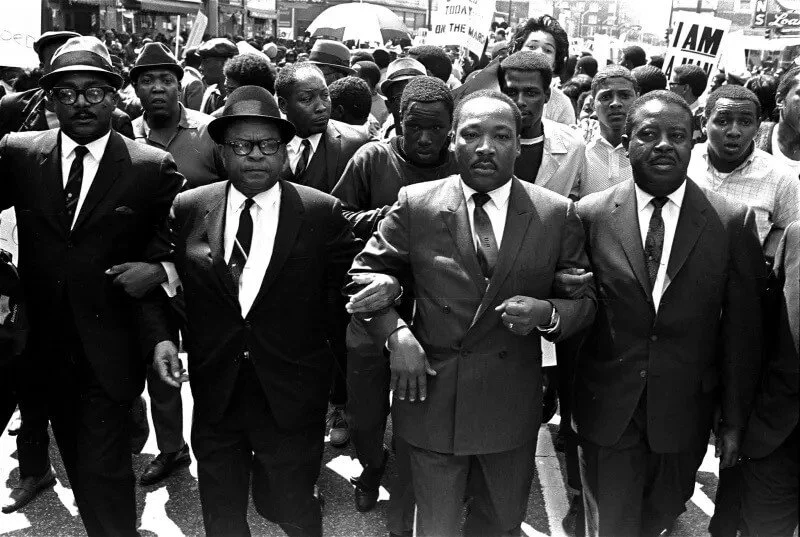The Timeless Style of Martin Luther King Jr.: A Fashion Legacy
Martin Luther King Jr. is celebrated for his profound impact on the civil rights movement, but his influence also extends into the world of fashion. Dr. King’s style was more than just a wardrobe choice; it was a powerful statement of dignity, respect, and resilience. Let’s dive into how his sartorial choices continue to inspire and resonate in today’s fashion landscape.
January 19th. Written by Ryan Packer Civil Rights Fashion: Elegance with Purpose
The civil rights movement of the 1950s and 1960s wasn’t just about marches and speeches—it was also about making a visual statement. Leaders like Dr. King often donned sharp, tailored suits, crisp white shirts, and slim ties. These outfits weren’t just about looking good; they were deliberate choices meant to project dignity and strength.
In a world that often tried to dehumanize them, these leaders used fashion to reclaim their identity and assert their place in society. Their polished appearance sent a message of defiance against the oppressive systems they fought against, turning everyday clothing into a symbol of resistance. This intentional elegance was a silent yet powerful form of protest, communicating resilience and unity without uttering a single word.
Dr. King’s Signature Look
Dr. King’s style was timeless. His wardrobe featured classic, well-fitted suits in neutral tones, paired with simple ties and polished shoes. This understated elegance spoke volumes, presenting him as a serious, respectable leader.
His look wasn’t about flash—it was about focus and determination, reflecting the gravity of his mission. The simplicity and sophistication of his attire helped to elevate the message he delivered, making him a figure of authority and respect. Even today, his style serves as a blueprint for those who wish to convey strength through simplicity.
Modern Tributes to Civil Rights Style
Today, we see Dr. King’s influence in various fashion trends. Designers often draw inspiration from the tailored looks of the 1960s, incorporating slim-fit suits and monochromatic palettes into their collections. Streetwear has also embraced this legacy, with graphic tees and jackets featuring Dr. King’s image or his powerful quotes, blending fashion with activism.
These modern tributes serve as a reminder of the era’s enduring impact, keeping the spirit of the civil rights movement alive through fashion. It’s a testament to how style can carry forward the values and messages of those who paved the way for equality. The fusion of historical inspiration with contemporary fashion keeps Dr. King’s legacy relevant in today’s culture.
Fashion as a Silent Protest
During the civil rights era, fashion became a form of protest. The neatly dressed activists, often seen in their Sunday best, presented a stark contrast to the violence and injustice they faced. Their clothing was a powerful tool, emphasizing their humanity and the dignity they deserved.
By dressing impeccably, they silently but firmly challenged the stereotypes imposed upon them. This visual protest helped to highlight the contrast between the peaceful dignity of the movement and the brutal responses they often encountered. It was a way to visually demand respect and equality, making their presence undeniable and their cause impossible to ignore.
The Enduring Legacy of Dr. King’s Style
Dr. King’s commitment to presenting himself with dignity through his clothing continues to resonate. In modern movements for justice and equality, fashion remains a tool for communication and identity. His style reminds us that what we wear can be a reflection of our values and aspirations, much like his dream for a just and equal society.
His legacy in fashion demonstrates the power of clothing as a statement of purpose and conviction. The way he carried himself through his attire continues to inspire generations to dress with intention and integrity. As fashion evolves, Dr. King’s example of using style as a platform for change endures, influencing both activism and aesthetics.
Martin Luther King Jr.’s influence on fashion shows us that style is more than just fabric—it’s a statement. His timeless approach to dress set a standard for the civil rights movement and left a lasting mark on the fashion world.
As we honor his legacy, we remember that fashion, like Dr. King’s dream, can be a powerful platform for expressing dignity, resistance, and hope. Through the clothes we wear, we can continue to celebrate his vision and the ongoing fight for justice and equality. His impact on fashion is a testament to the enduring power of style as a medium for storytelling and advocacy.
.--. .-.. .- -. -. -- .- --. .- --.. .. -.


